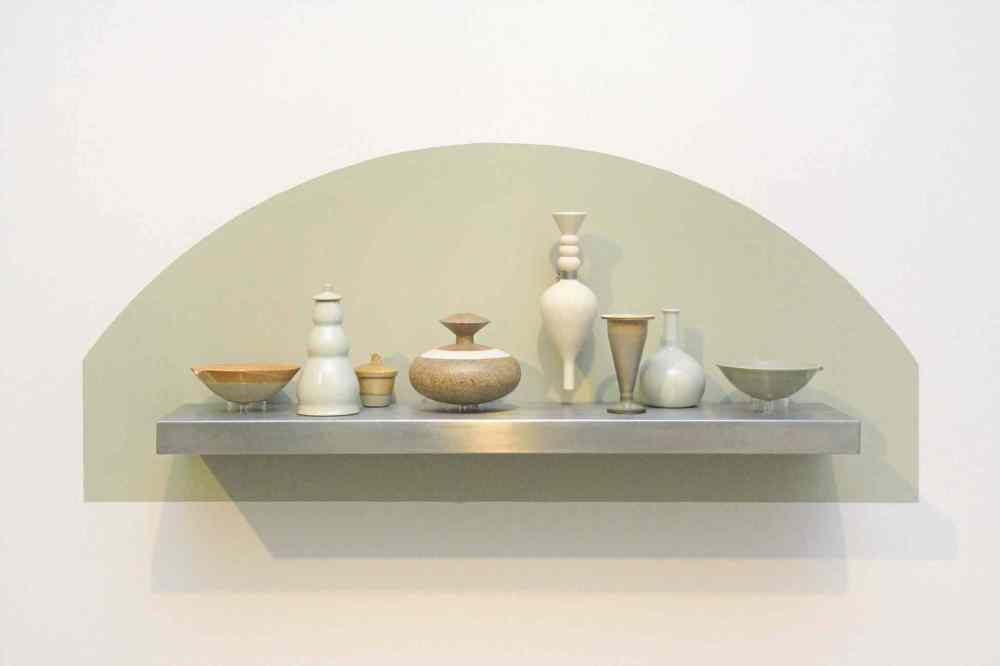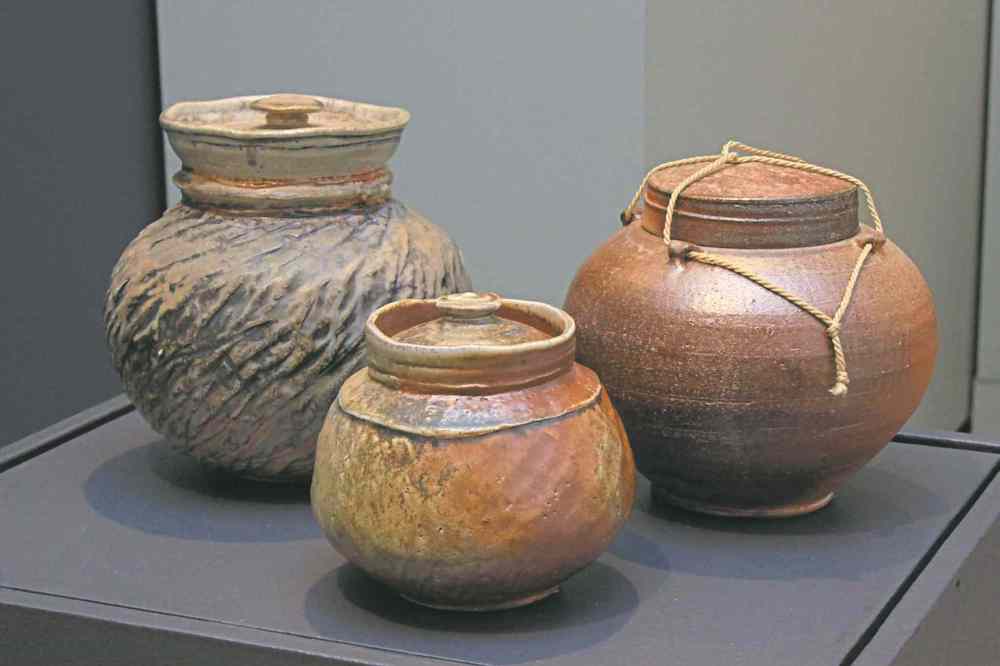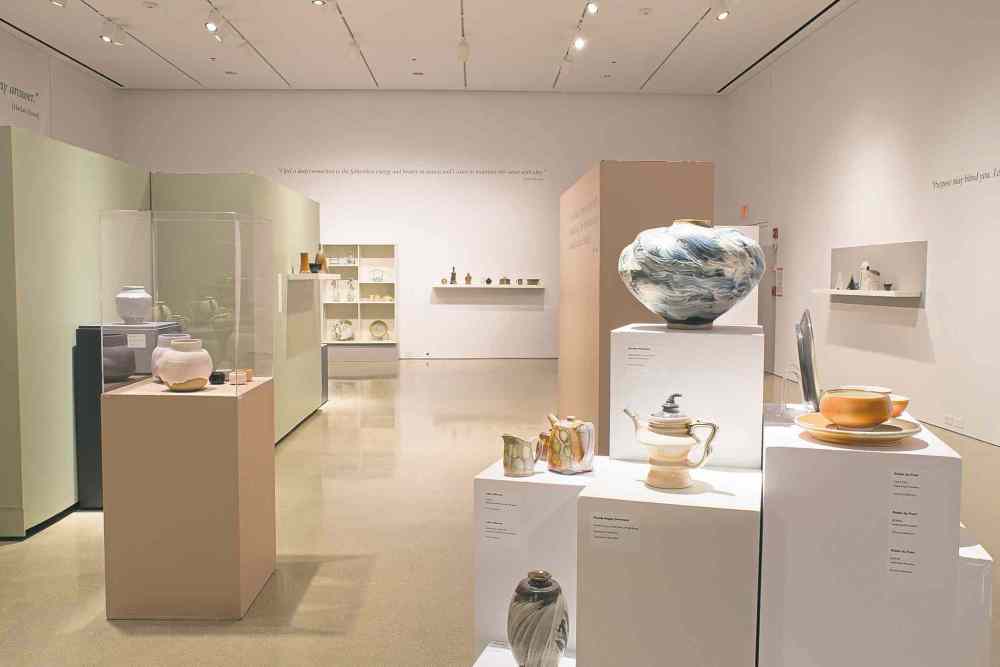Form, function, fire
Jam-packed exhibition explores the lively history of Canadian postwar pottery
Advertisement
Read this article for free:
or
Already have an account? Log in here »
To continue reading, please subscribe:
Monthly Digital Subscription
$0 for the first 4 weeks*
- Enjoy unlimited reading on winnipegfreepress.com
- Read the E-Edition, our digital replica newspaper
- Access News Break, our award-winning app
- Play interactive puzzles
*No charge for 4 weeks then price increases to the regular rate of $19.00 plus GST every four weeks. Offer available to new and qualified returning subscribers only. Cancel any time.
Monthly Digital Subscription
$4.75/week*
- Enjoy unlimited reading on winnipegfreepress.com
- Read the E-Edition, our digital replica newspaper
- Access News Break, our award-winning app
- Play interactive puzzles
*Billed as $19 plus GST every four weeks. Cancel any time.
To continue reading, please subscribe:
Add Free Press access to your Brandon Sun subscription for only an additional
$1 for the first 4 weeks*
*Your next subscription payment will increase by $1.00 and you will be charged $16.99 plus GST for four weeks. After four weeks, your payment will increase to $23.99 plus GST every four weeks.
Read unlimited articles for free today:
or
Already have an account? Log in here »
Hey there, time traveller!
This article was published 29/10/2015 (3681 days ago), so information in it may no longer be current.
2Questions of “art” and “craft” and “form” versus “function” help establish the terms of MUD, Hands, fire… an expansive survey of Canadian studio pottery that opened early this month at the University of Manitoba’s School of Art Gallery, but they hardly set the tone.
Alongside an extensively researched and richly illustrated catalogue, the show offers a rare art-historical perspective on several transformative decades in Canadian ceramics. More than anything, though, it’s a boisterous, multi-sensory celebration of material, form and process, of beauty and workmanship, and of 34 potters spanning several generations of artisans and teachers.
Catalogue essays sketch out the various lineages feeding into postwar pottery in this country, and the threads are easy to pick up in the jam-packed exhibition. A striking porcelain vase and tea set by Kathryne Koop feature stylized botanicals that nod to British textile designer William Morris and the anti-industrial Arts and Crafts movement, for instance, while the clean lines of Tam Irving’s almost futuristic shelf-top still lifes echo the utilitarian modernism of Bauhaus design.

The influence of East Asian pottery (as filtered through a British colonial lens in many cases) is especially marked, from the embrace of chance and “imperfection” to the adoption of specific forms and motifs, such as the koi fish gathered at the rippling surface of Harlan House’s cerulean charger or the turbulent surface of Gordon Hutchinson’s large vase, modelled after Hokusai’s Great Wave off Kanagawa.
Add to the mix successive waves of new Canadians, from influential Chinese-born B.C. ceramist Wayne Ngan to the American expat potters who packed it north in the Vietnam War years (a group that includes exhibition curator, art historian and ceramics professor Mary Ann Steggles), and what emerges is a new, distinctly pluralistic and distinctly Canadian ceramic tradition.
The installation itself is a warren of movable walls painted sage, taupe and dusty rose, which transform the cavernous exhibition space into a network of intimate, even domestic spaces that invite close consideration. Works by different artisans bump up against each other on clusters of plinths and under Plexiglas vitrines, the convivial clutter reminiscent of a packed cupboard or kiln shelf. The vessels hold their own as sculptures even as they practically cry out to be held and used.
The show offers a feast for diehard ceramics enthusiasts as much as casual admirers such as myself. At a certain point, I stop reading title cards and focus on the diversity of shapes and weights, colours and surface textures in front of me. I lose track of individual “hands,” marvelling instead at the alchemical interactions of “mud” and “fire.”
Quotes from the artists run along the gallery walls, restoring the personal connection between maker and material. Sidestepping tedious questions and definitions, Governor General’s Award winner and longtime School of Art prof Robert Archambeau puts it simply: “When I wake up in the morning, all I want to do is make a beautiful mud bowl.”

I’ve never been one to get my hands dirty, personally, but I can understand the impulse.
Steven Leyden Cochrane is a Winnipeg-based artist, writer and sessional instructor at the University of Manitoba School of Art.



